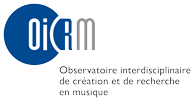Within the context of DMAQ, the phrase “audience development” is multi-dimensional. The concept implies an action – development – that is, to increase the number of people that comprise an audience. Starting with the premise that there is a core audience composed of a group of individuals, this endeavour seeks to add more people from a similar milieu or other milieus (community, professional, ethnic, etc.) in order to create an audience that is larger in number and wider in social diversity. Such actions can take many different shapes as audience development activities (ADA).
The concept of audience development also implies the idea of “building” an audience. [1] At the DMAQ, this concept might apply to a situation where a core audience already exists but might require the establishment of a stable group of subscribers. However, the concept of building an audience applies most often to the creation of new art forms and, by extension, new organizations (here we refer globally to musical ensembles, organizations, and institutions) whose newness requires particularly intensive audience development interventions in order to first construct the core audience.
The DMAQ’s initial investigations have expanded the definition of audience development by suggesting that within the present state of evolution of the music scene in Québec, the concept can be extended to audience retention activities. For many ensembles and organizations, sustaining an audience is a continual struggle that requires the implementation of strategies to encourage the audience’s attendance at and attention during the concert. We thus call these audience retention activities (ARA).
[1] Connolly, Paul et Marcelle Hinand Cady, 2001, Increasing Cultural Participation : An audience Development Planning Handbook for Presenters, Producers, and Their Collaborators. Illinois : Wallace-Reader’s Digest Funds.
« Retour au lexique







